During my status run to Hong Kong, I took a day trip to Shenzhen, a place I have never been before. Some of the information I found online was incomplete or incorrect so I wanted to share my efficient, cheap and easy way to see Shenzhen from Hong Kong.
If you are considering booking travel or signing up for a new credit card please click here. Both support LiveAndLetsFly.com.
If you haven’t followed us on Facebook or Instagram, add us today.
- Mileage Running May Be Dead, Status Running Still Alive
- United’s Polaris Lounge San Francisco
- Polaris Business Class Service San Francisco to Hong Kong
- Hyatt Regency Tsim Sha Tsui – Suite
- Hyatt Regency Sha Tin – Suite
- Shenzhen Day Trip
- Too Much Traveling
- Singapore’s Bad Hong Kong lounge
- ANA Business Class Hong Kong Tokyo
- ANA Haneda Lounge Review
- ANA Business Class Tokyo-Haneda to Chicago O’Hare
Neighbors
Hong Kong and Shenzhen are separated by a border but the two are close neighbors. Without wading into Chinese history, the expansion of Special Economic Zones (more or less economic areas where capitalistic measures, eased entry requirements, etc.) Deng Xiaoping created numerous SEZs, a pair of which operate in close proximity to Hong Kong. One is Shenzhen (another is nearby Guangzhou). Many of the consumer electronics made across the border (Foxconn makes Apple products famously in the area). The cities are rather different from each other but share some economic similarities.
Two Systems, One Country
With the end of the Opium Wars between China and England, five ports were established as access points for British naval ships with the city of Hong Kong leased in part (in part given) to Britain for 99 years (all under the control of Britain and the local Hong Kong government). That lease established Hong Kong as it is today (street signs remain in the Queen’s English and Cantonese, drive on the left side of the road, etc.).
Shenzhen is a kind of middle ground in China where exceptions apply but full Chinese rule still reigns. The currencies are different, the Yuan is used in China, the Hong Kong Dollar in Hong Kong, with different exchange rates about seven yuan to the US Dollar, just shy of eight Hong Kong Dollars to the USD (as of September 2018). Hong Kong has a representative democracy (though now influenced by mainland Chinese policy) and Shenzhen is fully Chinese. Free speech is still relevant and Western-style rule of law applies in Hong Kong, Chinese policies, communism and laws in Shenzhen and greater China.
At the handover, Basic Law in Hong Kong is to remain for 50 years (until 2047) with China’s policy of two systems, one country (China). Different immigration and entry policies also apply to each. While most nations can freely enter Hong Kong. By contrast, most nationals require a 10-year visa for entry into China (with the exception of extended travel periods whereby visitors may exit the airport for a period of 72-144 hours as long as they are in-transit to another country).
I hold a ten-year Chinese visa and can freely enter both Hong Kong and mainland China. I visit both a couple of times per year. For visitors, it is important to note that without a Chinese visa you will not be permitted entry to the Chinese mainland, though you will likely have permission to enter Hong Kong. You cannot gain this easily in Hong Kong and certainly not on arrival – make sure you have the proper visas in advance.
MTR to MTR
Interestingly, the public transport systems of both Shenzhen and Hong Kong are owned by the same entity, Hong Kong’s MTR. Transit stations meet each other on the opposite side of a bridge following customs. Each is easy to understand and use.
Hong Kong MTR
Hong Kong’s MTR (Mass Transit Railway) runs eleven lines, one of which is the East Rail Line. The line begins in Kowloon at Hung Hom station and traverses north to Lo Wu and Lok Ma Chau (splitting the end of the line at two different points). Hung Hom is also home to a Hong Kong train station which takes visitors from Hong Kong to destinations in Mainland China, but it’s important to note that you do not need to start at Hung Hom, any station on the East Rail Line will take you there.
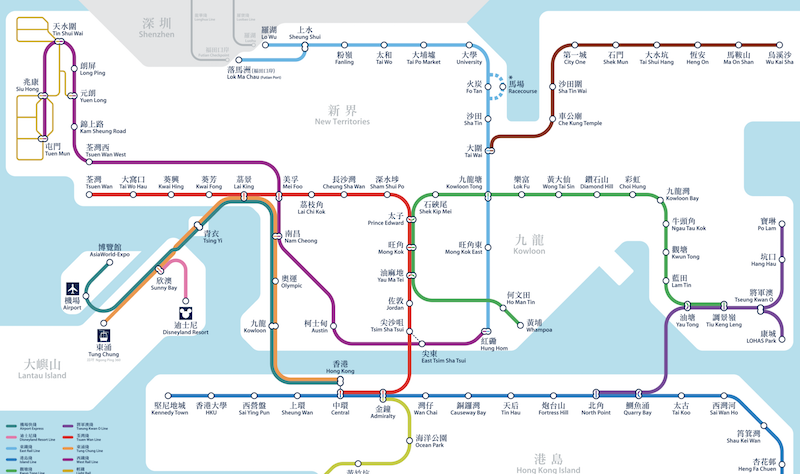
Starting from the University station on the East Rail Line (100 meters from the Hyatt Regency Hong Kong Sha Tin) the journey is a short five stops to the border. Both of the two East Rail lines end at separate Hong Kong-side metro stops and both pick up at separate Chinese border equivalents Luohu and Futian. Trains run less frequently to Lok Ma Chau but I tried both to give a fair representation. You cannot use your Octopus card (funds-loaded card for quick passage on the Hong Kong MTR) in Shenzhen.
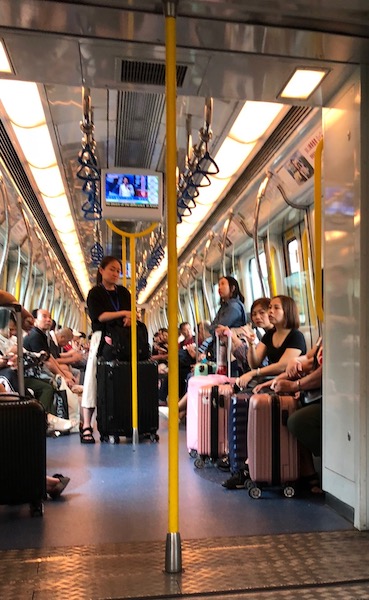
Shenzhen MTR
Passing through Chinese customs and clearing into Shenzhen at the Lo Wu/Luohou crossing, I made my way outside the building to another building outside and down the escalator to enter the Shenzhen MTR. For those connecting onto trains, there is a large train station outside the building a little further on.
Of note, for those who may be unaware, a number of touts offering an array of goods, transportation, and other offers will try to sell you as soon as you emerge from the customs building. They will reach out in English and a simple “no” will not be enough. Walk away while saying no and paying them no mind seems to work but there will be several. Do not get in a car with them, ignore them at all costs and continue on your way.
I entered through Luohu from the reciprocal Hong Kong side at Lo Wu and departed through Futian on the Shenzhen side joining the Hong Kong MTR at Lok Ma Chau. In all aspects, the Lo Wu/Luohu side was easier. Trains were more frequent, customs on both sides was faster and highly advisable. Unless your desired stop is directly in Futian I would avoid the Lok Ma Chau crossing.
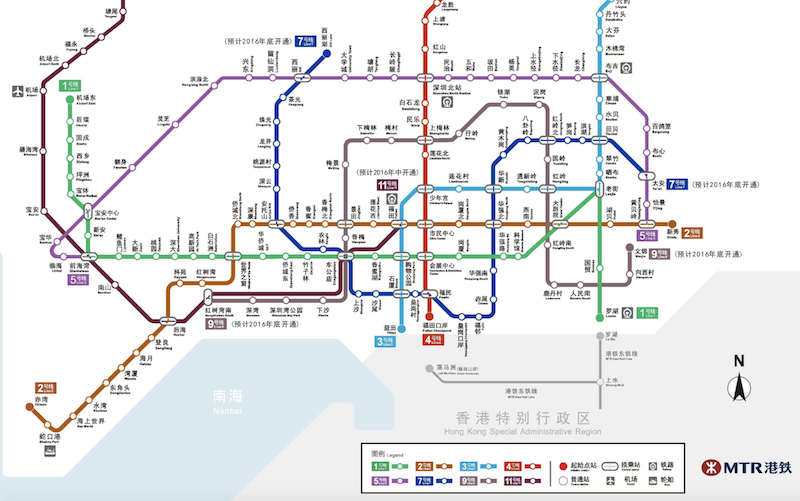

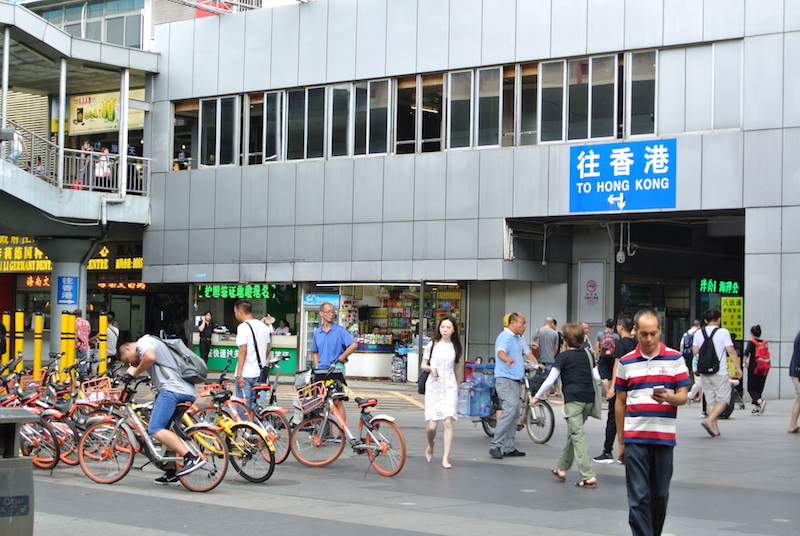




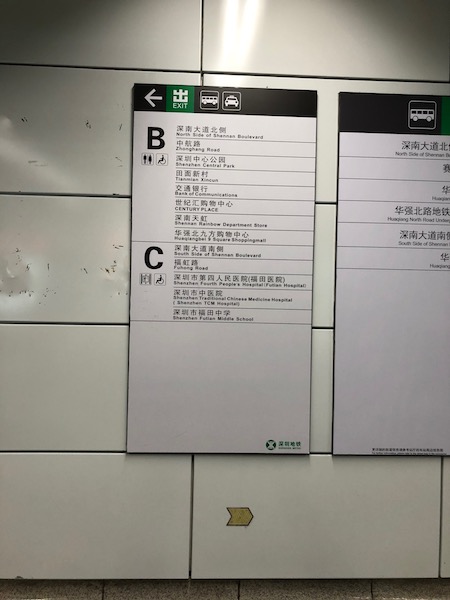
No Man’s Land and Customs
Once I exited customs in Hong Kong I proceeded to a bridge over the Ping Yuen river. The glass-encased bridge is essentially a no man’s land where one can be without a country (I am sure that’s technically untrue); for the distance of 30 meters, I was in neither country. For those fully subscribing to the “One China” message from the Middle Kingdom, I found it interesting that China still announces: “Chinese Customs”. The welcome message is carved into a stone pillar as you make it all the way across the bridge. While I think it is important to draw the distinction, it nonetheless, suggests (from China) that Hong Kong is not part of China and is in fact separate.
As you might imagine, photos are not permitted in the area.
Expedited lanes are available for families, the elderly, diplomats, Hong Kongers and Chinese citizens leaving a very short line for those that do not fit those categories. All the same, that short line was densely packed. Before entering that line, to the left is an automated kiosk that will expedite entry questions much like the US (and others do) with APC machines. While there is a place for a receipt to print, it is unnecessary and one never appeared for me. You must, however, fill out an entry/exit paper form as well (even though the Lo Wu border didn’t require one.
I attempted to secure one of the available machines but as soon as one finished in front of me, an aunty or uncle was pulled in front of me to use it next. I am used to this and patiently waited until I was last in line and pressured by the next Lo Wu inbound trainload of passengers insistent that I hurry up and bringing their own relatives in front of patient travelers as I had.
Passport in hand, I headed to the line and joined the queue. There was no place to retrieve a written paper form with entry and exit sheets due to the computer system that made them irrelevant, however, at the Futian exit from China, the paper form was required and I had to step out of line to complete it. These systems do not appear to be the same between the two ports.
Upon scanning my passport, greetings appeared on a screen in English, others had their own passport languages appear including Spanish and French. This is a really smart innovation and I wish all countries had this at entry (including at US ports for our visitors). Some were pulled out of line for additional questioning, but I was glad to not have been among them.
From exit in Hong Kong (through their frequent visitor program) to my exit into mainland China, the process took approximately 20 minutes.
Upon exit through Futian to Lok Ma Chau, I outlined the paperwork issue I had. I had left with nothing and came back with shopping bags from my day in Shenzhen but faced no scrutiny at my exit. The process from Futian was shorter, perhaps 15 minutes, but the wait for trains made the total exit time closer to 35 minutes having just missed a departing train.
What Will I Do Differently?
Firstly, I used to enter and exit Hong Kong often enough to qualify for their frequent visitor program (four entries in a rolling 12-month period). This year I visited far less often, however, if, for nothing else, I would in the future make the run to the border more often (especially if I am staying at the Hyatt Regency Hong Kong Sha Tin). The value of achieving more entries in Hong Kong greatly outweighs any inconveneince and the day trip was a fun distraction. Here is a quick guide to success in visiting Shenzhen from Hong Kong:
- Use Lo Wu/Luohu borders for convenience and efficiency
- Convert some Hong Kong dollars before entering China and break it within the customs facility for smaller denominations or withdraw in China before leaving the facility
- Avoid arriving at the border crossings before 9:30 AM and after 4 PM if possible
- Fill out paperwork in advance of arriving at the checkpoint even if you weren’t required upon entry
Have you made the trip to Shenzhen or Hong Kong from the other side of the border? What tips or tricks did I miss?

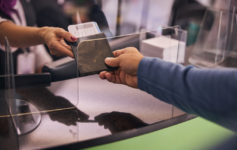

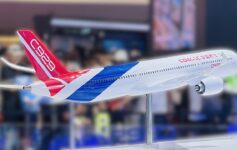
I always confuse these as well but, Hong Kong uses the Octopus card and not the Oyster card they use in London. 🙂
Shucks, I will correct it now. I get those confused all the time.
This is minor, but the train you were riding in Shenzhen from Luohu is line 1, not 2. The 2 there is for direction purposes.
Edited, thank you.
1. Currently there are only two SARs (Special Administration Region) in China, namely Hong Kong and Macau. US citizens can enter Hong Kong and Macau for a short stay without visa. Shenzhen has never been an SAR, instead it has been a “Special Economic Region” according to Deng’s proposal.
2. Your grasp of Hong Kong’s history is quite shaky. Hong Kong can be roughly divided into four regions, namly Hong Kong Island, Kowloon, New Territories, and smaller islands. The lease of 99 years you mentioned refers to the British “lease” of northern Kowloon and New Territories from China since 1898. Hong Kong Island and southern Kowloon had already become British territories since 1841 and 1860 respectively. In other words, Hong Kong Island and southern Kowloon were not “leased” to Britain, they were simply given to Britain.
Please check your facts before you post something!
@Oliver – You are correct, SERs not SARs. I will make the correction. To your second point, I agree that the New Territories and northern Kowloon was the only portion leased to Britain, however, the collective was under British control and the collective was given back to China in 1997 at the same ceremony. You’re absolutely factually correct but as I mentioned in the post, I don’t want to split hairs. For most travelers, understanding that Hong Kong (collectively) was once a British territory then turned over to China is news. Whether one portion was leased and the other given doesn’t change the handover and it is seemingly invisible to visitors today.
I appreciate your comments.
In the first paragraph, you refer to pair of (Special Administrative Region) SAR’s that operate in close proximity to Hong Kong are Shenzhen and Guangzhou. I am certain that the only SARs of China are Hong Kong and Macau. Are you specifying instead Special Economic Zones (SEZ), which in Guangdong Province, are Shenzhen and Zhuhai (across from Macau)?
Yes, and I will change it. Thanks Kevin.
MTR only owns one of the Shenzhen’s matro lines(line 4).
Welcome to my home city and I hope you enjoy your time here! But just to clarify –
1. Guangzhou is not a SEZ. Perhaps you are referring to Zhuhai, which is located in the province of Guangdong.
2. As @Danny says, MTR HK only operates Shenzhen’s line 4. All other lines are operated by Shenzhen Metro.
3. Personally I see no reason to prioritize Luohu over Futian/Low Mak Chau. In my experience of crossing through the borders for the past 7 years or so, I don’t really see any difference between these 2 checkpoints- both are hectic and crowded. Trains may run more frequently to Lo Wu but I think the difference in frequency is only noticeable in late hours
(think after 8/9 pm). During the daytime, the frequency is about the same.
It’s spelled Luohu, not Louhu.
Wow! Truly amazing review. Very informative. Thank you, Kyle!
You wrote a very interesting and detailed article about visiting HongKong and Shenzhen.
Perhaps, our subway navigation system for both HongKong and Shenzhen might be useful as well for travelers to these great cities.
https://www.metrocazar.com/hongkong/
https://www.metrocazar.com/shenzhen/